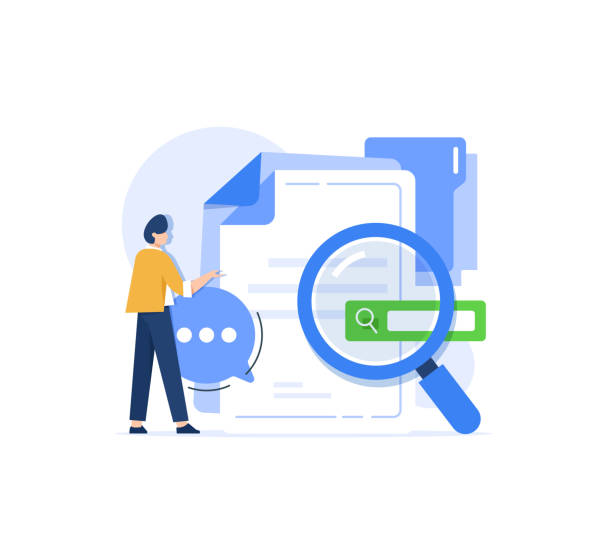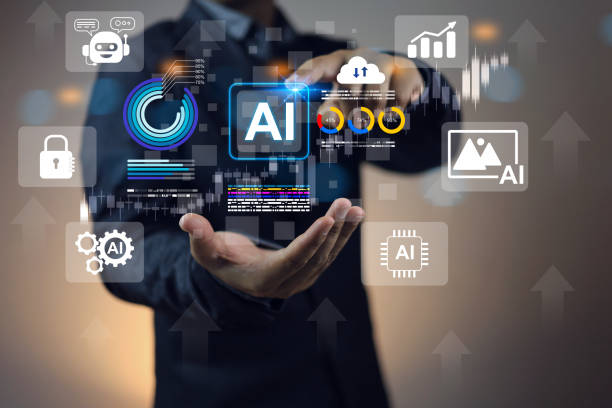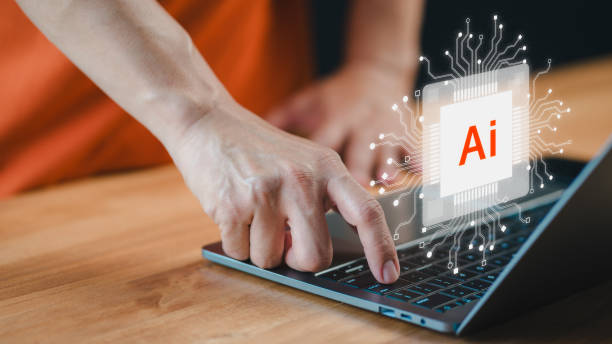Introduction to E-commerce Website Design: Why Now is the Time?
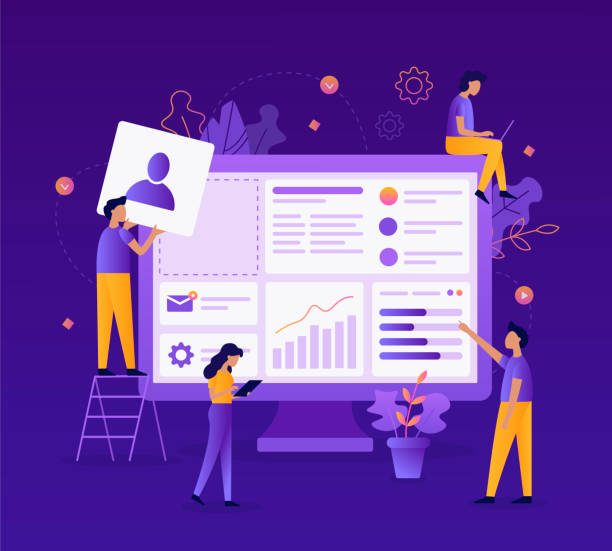
In the current era where every aspect of human life is influenced by digital advancements, e-commerce website design is not just a competitive advantage, but a vital necessity for the survival and growth of any business.
One can no longer rely solely on traditional sales methods; consumer behavior has undergone fundamental changes, preferring to make purchases anytime, anywhere, with just a few clicks via the internet.
This transformation raises the fundamental question: why should we consider creating an online store, and what are the benefits of #e_commerce? The answer lies in the ability to unlimited access to new customers, reduced operational costs compared to physical stores, and the possibility of 24/7 operation.
A powerful e-commerce website is not just an always-open display window for your products, but also a platform for direct interaction with customers, collecting valuable data, and continuous service improvement.
Therefore, investing in commercial website design is no longer a luxury choice, but a strategic step to expand the market and increase market share.
However, entering the realm of e-commerce and e-commerce website design is not without challenges.
Many businesses, despite spending exorbitant costs, do not achieve the expected success due to not adhering to principles and standards in the online store design and development process.
A poor design can lead to an undesirable user experience, high bounce rate, and ultimately, loss of customers.
Therefore, before any action, it is necessary to gain a deep understanding of what makes a successful e-commerce site.
This includes attractive visual design, easy navigation, high speed, strong security, and rich content.
Specialized knowledge in search engine optimization (SEO), digital marketing, and data analysis are among the key pillars to ensure the visibility and efficiency of your e-commerce platform.
This chapter provides you with a comprehensive insight into why and how to start this exciting journey, and the importance of meticulous planning for professional e-commerce website design to firmly lay the foundations of your success from the very beginning.
Tired of losing business opportunities due to not having a professional corporate website? Don’t worry anymore! With Rasaweb’s corporate website design services:
✅ Your brand’s credibility and professionalism will increase.
✅ You will attract more customers and sales leads.
⚡ Get a free consultation now to start!
Key Principles of Successful E-commerce Website Design: Enhancing User and Visual Experience
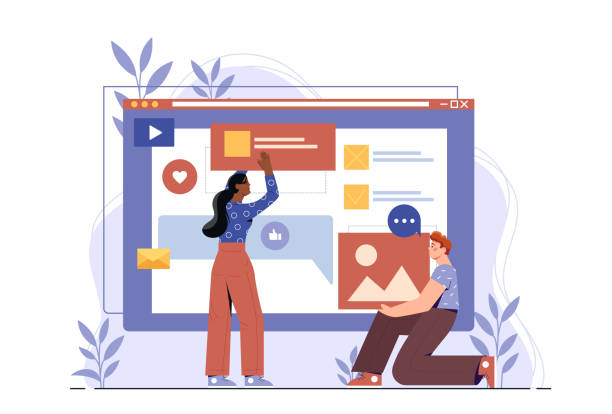
When it comes to e-commerce website design, the main focus should be on User Experience (UX) and User Interface (UI).
An attractive visual design, along with easy navigation and fast performance, can make a big difference in conversion rates and customer satisfaction.
Your e-commerce site should be designed so that customers can easily find their desired products, obtain sufficient information about them, and complete the purchase process without any obstacles.
This includes clear menu structures, powerful search, efficient product filters, and detailed product pages.
Every element on your site, from buttons to contact forms, should be intuitive and user-friendly so that the customer does not feel confused at any stage.
This educational section will help you become familiar with the principles of web design psychology as well.
One of the most important aspects in the e-commerce website design process is its responsiveness.
Given the significant increase in mobile phone usage for online shopping, your website must be displayed correctly and perform optimally on all types of devices (mobile, tablet, desktop).
This helps maintain a seamless user experience across all platforms.
Page loading speed is also vital; any small delay can lead to customer loss.
Image optimization (compressing size without quality loss), using caching, and choosing a powerful hosting provider are among the actions that help increase speed.
Furthermore, using colors, fonts, and graphic elements that align with your brand identity significantly helps create a cohesive and memorable visual experience.
Ultimately, user-friendly e-commerce website design not only increases your sales but also helps build customer loyalty, which is one of the main goals in e-commerce website design and might raise the question of how to find the best balance between aesthetics and functionality.
Choosing the Right Platform for E-commerce Website Design: Comparison and Analysis
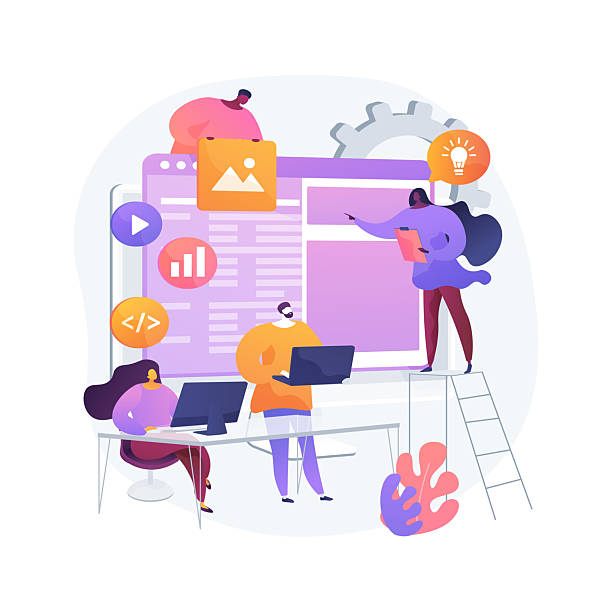
Choosing the right platform is the cornerstone of a successful e-commerce website design.
The market is full of diverse options, each with its own advantages and disadvantages, and choosing among them can be difficult for many.
From open-source and free platforms like WooCommerce, which is installed on WordPress, to SaaS (Software as a Service) solutions like Shopify, as well as more powerful and complex systems like Magento, or custom platforms developed from scratch for specific business needs.
Decision-making at this stage should be done carefully and based on factors such as available budget, future scalability requirements, specific desired store features, your team’s technical expertise, and the level of control you prefer over the infrastructure.
This section analytically guides you.
WooCommerce, due to its high flexibility, countless plugins and themes, and large user community, is very popular for small and medium-sized businesses and enables e-commerce website design on a limited budget.
Shopify, with its ease of use, user-friendly interface, and excellent support, is ideal for those looking for a quick and hassle-free setup, but it has monthly costs and customization limitations.
In contrast, Magento is suitable for larger companies with more complex needs, high order volumes, and specific integrations, but it requires more technical knowledge and financial resources.
Custom platforms also offer the ultimate customization, but come with higher development costs and time.
Comparison of E-commerce Website Design Platforms:
| Platform | Advantages | Disadvantages | Suitable for |
|---|---|---|---|
| WooCommerce | High flexibility, many plugins, full control over data and hosting | Requires technical maintenance, user responsible for security | Small to medium-sized businesses, startups with technical teams |
| Shopify | Ease of use, quick setup, strong support, built-in security and free hosting | Fixed monthly fees, more limited customization, transaction fees | Startups and small businesses without a technical team |
| Magento | High scalability, advanced features, great flexibility for customization | High complexity, requires specialized technical knowledge, costly in development and maintenance | Large and enterprise companies with high transaction volumes |
| Custom Platforms | Ultimate customization, full adaptability to specific business needs | Very high development cost and time, dependence on the development team | Large companies with very specific needs and unlimited budget |
A precise analysis of these factors at the beginning of the e-commerce website design process can prevent serious problems in the future and pave your way to achieving business goals.
The right choice ensures the sustainability and growth of your e-commerce website in the long term.
The Importance of Attractive Product Presentation and Rich Content in E-commerce Website Design
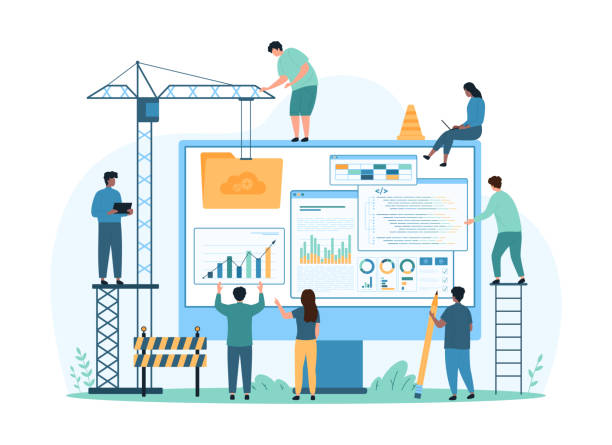
After choosing the right platform for e-commerce website design, it’s time for the attractiveness of products and the content presented.
In an online store, a customer cannot touch, smell, or see a product up close, so images and detailed descriptions play a vital role in their decision-making.
Using high-quality, excellent clarity images from various angles, along with product introduction videos and even how-to-use videos, can strengthen customer trust and provide an experience close to physical shopping.
This aspect of e-commerce website design is not only visual but also dependent on textual content and must be carried out with specialized care.
Product descriptions should be comprehensive, accurate, and convincing.
These descriptions should not only state the product’s technical features but also address the benefits, uses, and solutions the product offers to the customer.
Instead of just listing specifications, focus on the added value the product brings to the customer’s life.
Using relevant keywords in product descriptions can help your website’s SEO and increase its visibility in search results.
Furthermore, providing reviews and ratings from previous customers for each product, is a powerful element in increasing credibility and encouraging new customers to purchase.
This part of e-commerce website design and development is highly focused on content marketing and digital trust-building.
Rich content also includes relevant blog articles, buying guides, and frequently asked questions, which not only help customers in their decision-making but also attract organic traffic to your site and establish you as an authority in your product field.
Ultimately, focusing on content quality and richness is considered one of the main pillars in e-commerce website design with high growth potential and guides you on how to demonstrate your superiority.
Does your company’s website create a professional and lasting first impression in the minds of potential customers? If the answer is no, it’s time to have your professional and impactful corporate website with Rasaweb.
✅ Fully custom design tailored to your brand identity
✅ Increase lead generation and business credibility in the eyes of customers⚡ Contact us for a free consultation!
Security and Payment Gateways in E-commerce Website Design
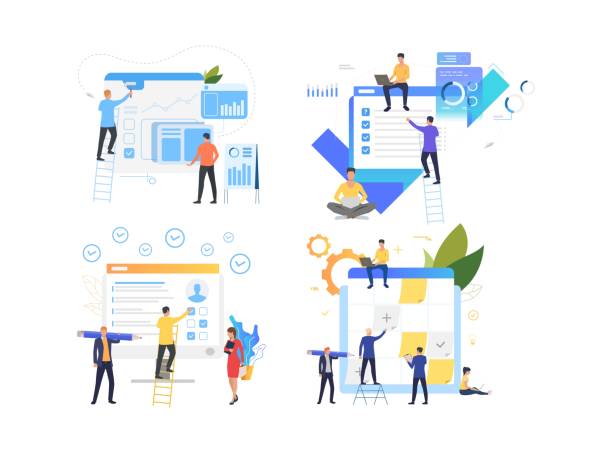
One of the most important and sensitive concerns for customers in online shopping is the security of their personal and financial information.
Therefore, e-commerce website design must prioritize security and address it professionally.
The use of an SSL certificate (Secure Sockets Layer) for encrypting all information sent and received between the user and the server is an undeniable necessity.
This certificate, indicated by a green padlock icon in the browser’s address bar, not only helps protect information but also increases customer trust and improves the site’s SEO ranking in search engines.
Without SSL, many browsers will show your site as insecure, and customers will refrain from entering it.
Choosing secure and reputable payment gateways is also an integral part of the e-commerce website design process.
In Iran, connecting to Shaparak and using payment gateways from reputable banks or well-known payment intermediaries like Zarinpal and ADP is common and essential.
These gateways must provide a smooth and flawless user experience so that customers can easily and confidently complete their purchases.
Adherence to PCI DSS security standards is also very important for any online store that processes credit card information.
Even if you use intermediary gateways, ensuring that the service provider adheres to these standards is crucial.
Security news and updates related to the platform and plugins used should also be regularly monitored to prevent vulnerabilities.
Therefore, special attention to security aspects at all stages of e-commerce website design, from infrastructure to user interface, is inevitable for the long-term sustainability and success of your business.
SEO and Marketing for E-commerce Website Design: Attracting Targeted Traffic
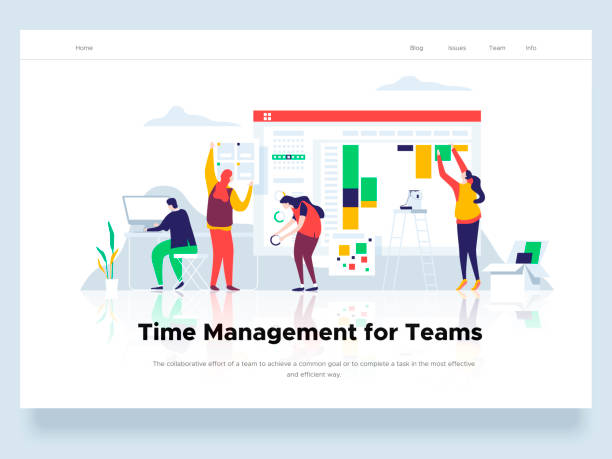
E-commerce website design without a marketing and SEO strategy is like building a beautiful store in the desert; even the best website cannot generate sales without visitors.
SEO (Search Engine Optimization) is the backbone of attracting organic traffic and one of the important educational aspects in this field.
This includes keyword research to find phrases your potential customers search for, optimizing titles and meta descriptions for greater appeal in search results, correct use of Heading tags for content structuring, optimizing images with appropriate Alt tags, creating high-quality and unique content (such as product descriptions, blog articles), and building valid internal and external links.
Focusing on technical SEO and On-Page SEO during e-commerce website building is the foundation for success in Google rankings and guides you on how to differentiate yourself.
In addition to SEO, digital marketing strategies are also vital for increasing the visibility of your online store.
Content marketing through a blog relevant to your products can attract targeted traffic and inform and engage potential customers.
Social media marketing allows you to connect with your audience, brand yourself, and promote your products.
Paid advertising campaigns like Google Ads and social media advertising (such as Instagram and Telegram) can quickly drive targeted traffic to your site.
Also, email marketing is very effective for informing customers about discounts and new products, and for bringing back abandoned cart customers.
A comprehensive e-commerce website design should be planned from the outset with an SEO-centric approach and a strong marketing strategy to maximize efficiency.
This approach ensures that your efforts in e-commerce site optimization lead to tangible sales results and propel you forward in the competitive e-commerce landscape.
Customer Service and Post-Launch Support in E-commerce Website Design
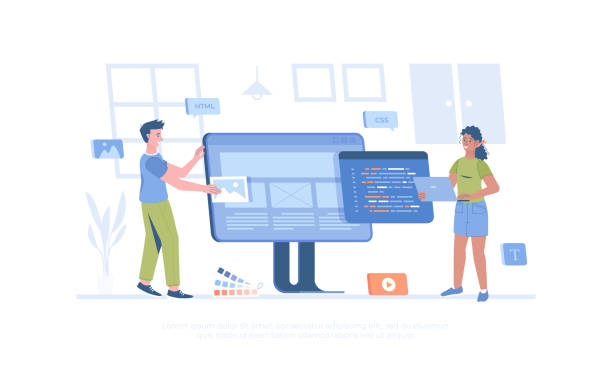
The success of an e-commerce website design is not limited to its visual appeal and technical performance; it also depends on the quality of customer service and after-sales support.
A positive shopping experience can turn a customer into a loyal buyer, and poor service can make even the best products seem worthless.
Providing multiple and accessible communication channels such as online chat, phone number, email, and a Frequently Asked Questions (FAQ) section is essential.
Online chat, due to its quick response time and instant interaction, has become one of the most popular methods and should be given special attention in online store building.
This engaging approach can keep customers involved and encourage them to purchase.
After-sales support includes order tracking, complaint handling, return processes, and providing necessary guidance for product use.
Return and refund policies must be transparent, fair, and easily accessible so that customers feel confident.
Customers should feel that if a problem arises, they can trust you and will receive the necessary support.
Furthermore, regular website maintenance and updates are also part of post-launch support.
This includes checking for broken links, content updates, installing security patches, and ensuring the proper functioning of all features.
In the table below, you can see important aspects of support and maintenance that are vital in the e-commerce website development process and serve as a comprehensive guide:
| Type of Support/Maintenance | Description | Importance in E-commerce Website Design |
|---|---|---|
| Online Support (Live Chat) | Quick response to customer questions during purchase or need | Increased conversion rate, reduced cart abandonment rate, immediate customer satisfaction |
| Ticketing/Email System | Organized management of requests, complaints, and long-term follow-up | Documented and trackable support, handling more complex issues |
| Return and Warranty Policies | Clear and simple rules for product exchange, repair, or return | Increased customer trust, reduced purchase risk, improved brand reputation |
| Regular Technical Maintenance (Backup and Updates) | Performance review, updates, security patches, bug fixes | Maintaining site security, speed, and optimal performance, preventing downtime |
Commitment to excellent support not only helps retain existing customers but also acts as a competitive advantage in the world of e-commerce website design and allows you to operate with greater confidence in the digital market.
Data Analysis and Continuous Optimization in E-commerce Website Design
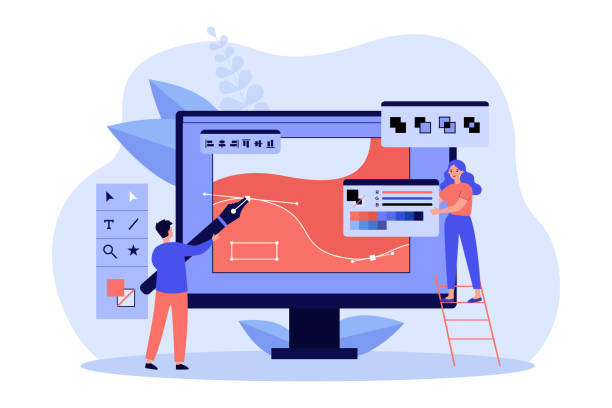
After e-commerce website design and launch, the work doesn’t end; instead, a new phase of continuous monitoring, analysis, and optimization begins.
This vital process is essential for deeply understanding user behavior and optimizing your online store’s performance.
The use of tools like Google Analytics and Google Search Console for data collection and analysis is inevitable.
These tools provide vital information about site traffic, traffic sources (organic search, social media, referral), bounce rate, user dwell time, popular pages, and most importantly, customer purchase paths.
Precise analysis of this data helps you identify the strengths and weaknesses of your e-commerce website and make specialized and data-driven decisions.
Based on these analyses, you can proceed with Conversion Rate Optimization (CRO).
CRO means optimizing the website to increase the percentage of visitors who perform your desired actions, such as purchasing a product, subscribing to a newsletter, or filling out a form.
This process can include A/B testing to compare different versions of a page or website element (e.g., button color, call-to-action text), changes in page layout, improving CTAs (Call to Action), and refining the checkout process.
The ultimate goal of e-commerce site optimization is to convert more visitors into customers and increase revenue.
For example, if you notice that many users abandon their shopping carts, you can simplify the checkout process or add more payment options.
Continuous care and monitoring of website performance, both technically (speed, security, uptime) and in terms of marketing (SEO, traffic, conversion rate), are vital for the long-term sustainability and growth of any online store.
This analytical and data-driven approach ensures that your investment in e-commerce website design leads to the best possible results and that you are always on a path of progress and improvement.
This process never stops, as customer behavior and search algorithms are constantly changing, and your store must evolve accordingly.
Does your current website build the trust that potential customers should have in your business? If not, it’s time to have your professional and impactful corporate website with Rasaweb.
✅ Fully custom design tailored to your brand identity
✅ Increase lead generation and business credibility in the eyes of customers⚡ Contact us for a free consultation!
Common Mistakes in E-commerce Website Design and How to Avoid Them
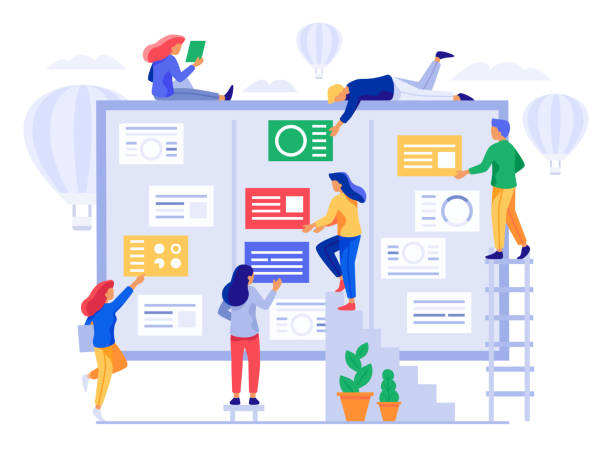
In the path of e-commerce website design, many businesses make mistakes that can jeopardize their success or even lead to project failure.
Understanding these mistakes and knowing how to avoid them is a crucial step towards building an efficient and profitable online store.
One of the most common mistakes is complex and disorganized navigation.
If a customer cannot easily find their desired products or gets lost among the site’s pages, they will quickly leave your site.
Designing clear menus, logical categories, and using advanced search capabilities with efficient filters solve this problem and provide a better learning experience for users.
Slow website loading speed, is the second biggest factor for losing customers.
Internet users have little patience and expect pages to load in less than a few seconds.
Any delay reduces the chance of converting a visitor into a customer.
Image optimization (using modern formats like WebP), code compression (CSS, JavaScript), and choosing a powerful hosting provider close to the target audience are solutions to this problem.
Lack of mobile compatibility (non-responsiveness) is also a glaring mistake.
Given that a large portion of web traffic and purchases come from mobile, a site that does not display correctly on mobile and provides a poor user experience loses a large part of the market.
Lack of clear contact information and poor support destroys customer trust.
Customers need to know how to contact you and whom to trust if a problem arises.
Also, insufficient product descriptions, low-quality, or unclear images can lead to hesitation and non-purchase.
Finally, a complex checkout process or forced registration for purchase deters many customers at the last stage.
In e-commerce website design, the simpler and smoother the purchase process, the higher the conversion rate will be, and customers will have a better experience.
By considering these points, you can avoid common pitfalls and build a successful e-commerce website and thought-provoking content that raises the question of why some businesses still repeat these mistakes.
The Future of E-commerce Website Design: AI, Augmented Reality, and Personalization

E-commerce website design is constantly evolving, and the future of this industry is intertwined with emerging technologies.
These developments will fundamentally change the landscape of e-commerce.
Artificial Intelligence (AI) and Machine Learning will play an increasing role in personalizing the shopping experience.
From smart and precise product recommendations based on purchase history, search, and even user taste and lifestyle, to advanced chatbots that can answer complex customer questions, assist them in the purchasing process, and even offer personalized suggestions.
These technologies help businesses improve interactions and increase sales by gaining a deeper understanding of their customers, which is an important part of the explanatory and news aspects.
Augmented Reality (AR) and Virtual Reality (VR) are also changing how customers interact with products.
Imagine that before buying a sofa, you can virtually place it in your living room and see how it looks and if it matches your decor, or virtually try on clothes to ensure their size and style.
These technologies take the online shopping experience to a new level of immersion and interaction and also help reduce product return rates.
E-commerce website design in the future must incorporate these new tools to remain competitive and improve customer experience.
Voice search and voice assistants are also becoming widespread, and e-commerce websites must be optimized for this type of search to make their products easily discoverable.
Furthermore, the importance of sustainability and social responsibility in e-commerce website design is also increasing; consumers are more inclined towards brands that care about environmental and social issues and adhere to ethical values.
Ultimately, the future of e-commerce website design is moving towards creating completely personalized, immersive, responsible, and interactive experiences that blur the lines between online and physical shopping.
These developments indicate that online store design and development constantly require updates, innovation, and foresight to survive in the competitive market.
Frequently Asked Questions
| Question | Answer |
|---|---|
| What is e-commerce website design? | The process of creating a website that allows displaying products or services, adding them to a shopping cart, and conducting online transactions. |
| Why do we need an e-commerce website? | 24/7 access to customers, increased geographical sales reach, reduced operational costs compared to a physical store, and the ability to analyze customer behavior. |
| What features are important in e-commerce website design? | User-friendly and attractive appearance, product categorization, shopping cart, secure payment gateway, search functionality, customer reviews section, and inventory management. |
| How much does e-commerce website design cost? | It varies depending on complexity, requested features, custom design or use of ready-made templates, and the company you choose. |
| What platforms are available for e-commerce website design? | Content Management Systems (CMS) like WooCommerce (on WordPress) and PrestaShop, or custom and cloud platforms like Shopify (foreign) and Sazito (Iranian). |
And other services of Rasa Web Advertising Agency in the field of advertising
Creative tips for choosing headlines for medical equipment ads
Increase click-through rate with smart design of medical equipment ads
How to use discounts and special offers in medical equipment ads?
Ways to build audience trust in medical equipment ads
Optimizing medical equipment ads for international audiences
And over a hundred other services in the field of internet advertising, advertising consulting, and organizational solutions
Internet Advertising | Advertising Strategy | Advertorial
🎯 With Rasaweb Afarin Digital Marketing Agency, transform your business in the digital world and achieve your big goals. We pave your way to success by providing services such as professional website design, SEO, and content marketing.
📍 Tehran, Mirdamad Street, next to Bank Markazi, Southern Kazeroon Alley, Ramin Alley, No. 6

